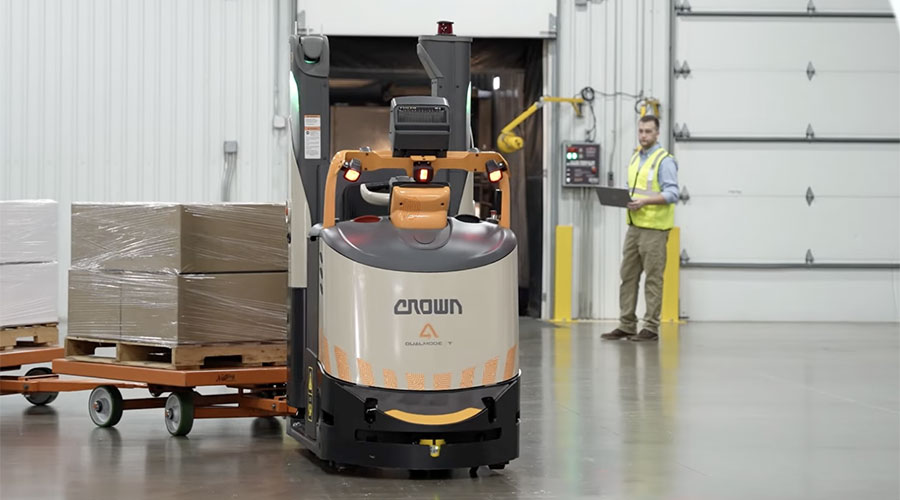Selecting the Right Automation Strategy

As you continue along your automation journey, you’ll face one of your biggest decisions: choosing a strategy that relies on fixed assets or one that uses mobile assets.
A fixed automation approach introduces immobile equipment, such as shuttles and conveyors, into the warehouse to automate manual processes. These solutions are often semi-permanent and may even become part of the assumed infrastructure of a facility.
Mobile automation systems work within existing warehouse infrastructures to automate manual processes. This can include autonomous mobile robots (AMRs), automated guided vehicles (AGVs) and autonomous forklifts.
Either approach can deliver key benefits such as improved resource allocation and increased productivity. But there are meaningful differences in the investment required, the amount of disruption to operations and how quickly you might realize the benefits.
Working with an experienced automation partner like Crown Equipment can help you determine an approach for your operation that will help achieve your goals. Fixed automation typically has longer deployment times and can significantly disrupt warehouse operations during installation. Consequently, mobile automation can often be a better choice when addressing near-term hiring challenges. Mobile automation may also make it easier to complete smaller pilot projects to validate the value and desired benefits.
Once you determine the right approach, your automation partner can work with you to identify the specific automation technology that fits your operation. Even as you choose mobile automation technology, you will still need to determine if your solution includes AMRs, AGVs, automated forklifts, or a blend of these technologies.
One option getting a lot of attention is dual-mode automation technology that allows forklifts to be switched between manual and automated operations to accommodate dynamic changes in your production plan. An intuitive user interface enables trained employees to easily switch from manual operation to automated operation using natural features navigation that requires minimal or no supporting infrastructure.
The mix of automated and manual operation depends greatly on the lift truck type and the application itself. Some applications are designed to isolate the automated vehicles within the aisle or within specific areas of the warehouse, where manual operation is used only to handle interventions, such as product or vehicle exceptions. Other applications, such as automated transport, operate in a less structured environment, so the vehicles are more likely to encounter situations that require manual intervention.
For more information on selecting the right approach to automation, including how you can use telematics to optimize the automation solution, download Crown’s e-book The Time to Automate is Now: Overcoming the Hurdle of Getting Started.